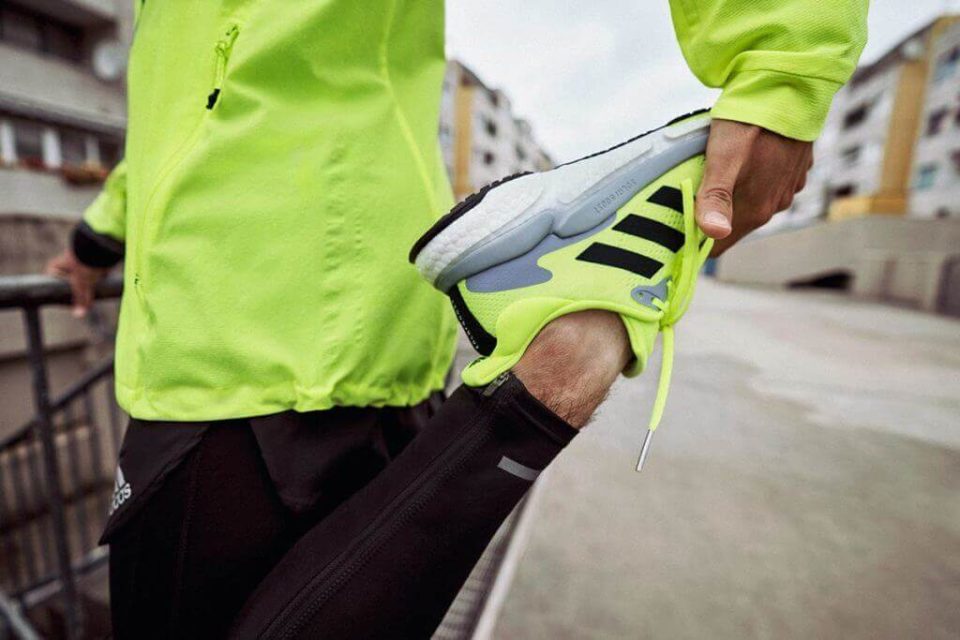The worst enemy of every runner: foot blisters. They are one of the most common injuries that occur when running. A blister on your foot can really take the fun out of running, turning every step into sheer agony.
How do blisters form?
Blisters on the feet are formed by repeated rubbing between the sock, the running shoe and the skin of the foot. The main causes of friction are sharp seams, wrinkled socks or ill-fitting insoles or running shoes. If the skin is irritated (for example, by rubbing) for a long period of time, fluid will collect under the skin, forming a blister. Severe damage to the skin can even lead to blood blisters. These sore spots, depending on their size and intensity, are usually so painful that they make normal running virtually impossible.
First aid for Running blisters
If you notice while you are running that a blister is forming on your foot, you should probably end your workout early. This is the only way to keep the blister from getting worse or even infected. Plus, if it hurts to put weight on your foot, this will affect your running style and can potentially lead to painful compensation patterns.
If blisters appear during a race or a running event, there is only one thing you can do: grin and bear it! If you can, let a medic tape the sore spots to help reduce the rubbing.
After you finish running, the first thing you should do is take a rest and let your foot recover. This gives your skin time to heal and doesn’t make the wound worse.
Tip from running expert Sascha:
“You can cushion small blisters with special gel bandages. These speed up the healing process and reduce the pressure of the shoe on the painful spot. If the blister is so big that you have to pop it, make sure that the needle is clean and sterile. Otherwise, you run the risk of infection and blood poisoning!”
Blister prevention for pain-free running
Of course, the best thing is to prevent blisters before they form. Prepare and take care of your running gear – even little things can cause problems. Use the following three tips to get your running shoes, socks and feet ready for some pain-free running fun:
1. Your running shoes
- The most important thing is that your running shoes fit properly and are not too small. To keep your toes from rubbing, there should be a thumb’s width of space between your longest toe and the toe box. This ensures that your foot has enough room to move on downhill sections. Also, your feet often swell on long runs. Therefore, you need some extra room so your feet don’t pinch or rub against the side of the shoe.
- Break in your running shoes and wear them around during the day a few times before you start training in them. This allows your feet to get used to the feel of the new running shoes. You should make sure to run 20-30 km in your running shoes before you use them in a race or a running event. If you track your runs and walks with the adidas Running app, you’ll know exactly when you reach this distance.
- Change your running shoes regularly. Painful hotspots often depend on the characteristics of the shoe. Changing running shoes frequently allows these sensitive spots to recover faster.
- If poor workmanship on the inside of your shoe is the cause of the rubbing, it often helps to tape this area or make it more flexible with some Vaseline or baby powder. If this doesn’t work, then you should return the shoe to where you bought it or seek the advice of a shoemaker.
- The insoles of a new running shoe can also cause blisters. Simply replace these with the insoles from an old pair of running shoes. That’s often enough to solve the problem. However, if your personal, orthopedic insoles do not fit properly, then you should have an expert file and trim them to reduce the friction.
2. Your socks
- Your sock is the interface between your foot and your running shoe. That is why it is especially important to avoid rubbing here and to ensure an equal distribution of pressure. Your socks should fit properly and not be too thick: this keeps them from wrinkling, which can lead to rubbing.
- Make sure to break in your socks, too: you should never run a race or a running event in new or freshly washed socks. The material is usually too hard and hasn’t had time to adjust to the shape of your foot yet.
- Keep your feet as dry as possible. Socks made of synthetic fibers wick moisture away from the skin of your feet. Thus, your feet remain dry and it is harder for blisters to form.
- If you like to run without socks, use special triathlon shoes. These are designed for running without socks and provide more cushioning.
3. Your feet
- Your feet have to work hard when you run. For this reason, you need to take proper care of them. Regular foot care or a pedicure helps keep the skin supple and prevents hot spots from forming.
- It is probably a good idea to use special gel bandages or tape on problem areas. Make sure there are no wrinkles when you apply them. In addition, you can spread foot repair balm or deer tallow cream on your feet before or after your workout. This cools the stressed skin, keeps it flexible and prevents chafing.
- You also shouldn’t underestimate the ability of barefoot training to toughen up the skin on your feet. Plus, it is easier on your body, especially your joints, and it strengthens your foot muscles.
,

